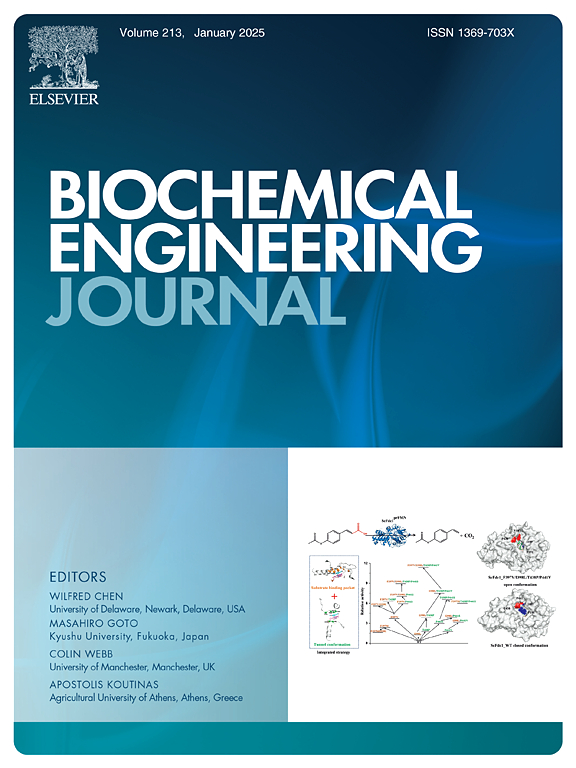Effects of different influent carbon-to-phosphorus ratios on phosphorus transformation, microbial community structure and metabolic functions in an upflow anaerobic sludge bed reactor
IF 3.7
3区 生物学
Q2 BIOTECHNOLOGY & APPLIED MICROBIOLOGY
引用次数: 0
Abstract
Excessive phosphorus emissions can result in the eutrophication of water bodies, causing severe environmental damage as well as influencing the efficiency of water treatment equipment. The impacts of carbon/phosphorus ratios on performance and mechanism of the upflow anaerobic sludge bed reactor remain unclear. Henrie, the effects of different carbon/phosphorus ratios (i.e., 80:1, 40:1, and 20:1) on the transformation of phosphorus in the biological treatment process of an upflow anaerobic sludge blanket (UASB) reactor were studied. The results showed that phosphines are of great importance in the phosphate reduction process. After a stable operation, the phosphine reached the highest 81.91 mg/m3 at a C/P ratio of 40:1. It was proved that the optimum operating condition of the reactor was carbon to phosphorus ratio of 40:1. Phosphate-reducing bacteria were present in the UASB reactor, and the relative abundance of Clostridia in the sludge was 1.90 % and 1.59 % when the C/P was 80:1 and 20:1, respectively. This implied that the low carbon to phosphorus ratio reduces the phosphorus-reducing microbial activity in the reactor. Lower C/P values could inhibit the uptake and use of P in the phosphonate transport system and the transport of phosphate in the cell by the microbial Pst system, impeding the mineralization of organophosphates. The study provides new insights into improving the efficiency of treating phosphorus-rich wastewater.
不同进水碳磷比对上流式厌氧污泥床反应器中磷转化、微生物群落结构和代谢功能的影响
过量的磷排放会导致水体富营养化,造成严重的环境破坏,也会影响水处理设备的效率。碳磷比对上流式厌氧污泥床反应器性能的影响及机理尚不清楚。Henrie,研究了不同碳磷比(80:1、40:1和20:1)对上流式厌氧污泥毯(UASB)反应器生物处理过程中磷转化的影响。结果表明,膦在磷酸还原过程中起重要作用。稳定运行后,当C/P比为40:1时,磷化氢最高可达81.91 mg/m3。结果表明,反应器的最佳运行条件为碳磷比为40:1。当C/P为80:1和20:1时,污泥中梭状芽孢杆菌的相对丰度分别为1.90 %和1.59 %。这表明低碳磷比降低了反应器中除磷微生物的活性。较低的C/P值会抑制磷酸盐转运系统对磷的吸收和利用以及微生物Pst系统对磷酸盐在细胞内的转运,阻碍有机磷酸盐的矿化。该研究为提高富磷废水的处理效率提供了新的思路。
本文章由计算机程序翻译,如有差异,请以英文原文为准。
求助全文
约1分钟内获得全文
求助全文
来源期刊

Biochemical Engineering Journal
工程技术-工程:化工
CiteScore
7.10
自引率
5.10%
发文量
380
审稿时长
34 days
期刊介绍:
The Biochemical Engineering Journal aims to promote progress in the crucial chemical engineering aspects of the development of biological processes associated with everything from raw materials preparation to product recovery relevant to industries as diverse as medical/healthcare, industrial biotechnology, and environmental biotechnology.
The Journal welcomes full length original research papers, short communications, and review papers* in the following research fields:
Biocatalysis (enzyme or microbial) and biotransformations, including immobilized biocatalyst preparation and kinetics
Biosensors and Biodevices including biofabrication and novel fuel cell development
Bioseparations including scale-up and protein refolding/renaturation
Environmental Bioengineering including bioconversion, bioremediation, and microbial fuel cells
Bioreactor Systems including characterization, optimization and scale-up
Bioresources and Biorefinery Engineering including biomass conversion, biofuels, bioenergy, and optimization
Industrial Biotechnology including specialty chemicals, platform chemicals and neutraceuticals
Biomaterials and Tissue Engineering including bioartificial organs, cell encapsulation, and controlled release
Cell Culture Engineering (plant, animal or insect cells) including viral vectors, monoclonal antibodies, recombinant proteins, vaccines, and secondary metabolites
Cell Therapies and Stem Cells including pluripotent, mesenchymal and hematopoietic stem cells; immunotherapies; tissue-specific differentiation; and cryopreservation
Metabolic Engineering, Systems and Synthetic Biology including OMICS, bioinformatics, in silico biology, and metabolic flux analysis
Protein Engineering including enzyme engineering and directed evolution.
 求助内容:
求助内容: 应助结果提醒方式:
应助结果提醒方式:


